Energy Storage for Energy Security and Reliability through Renewable Energy Technologies: A New Paradigm for Energy Policies in Turkey and Pakistan
Abstract
1. Introduction
- The detailed study and comparison of renewable ESTs for each type with respect to their operational mechanism.
- Discussion of the renewable energy scenarios of Pakistan and Turkey to analyze the actual potential of each renewable energy resource.
- Proposal and recommendation of the policy for the ESTs application suggested for both nations to secure feasible and trusted power supply arrangement.
2. Energy Storage Technologies (EST)
2.1. Different ESTs with Implementation in Power Sector
- Pumped hydro storage technology is suitable for frequency restoration reserve, energy shifting/load leveling and island grid applications [17].
- Compressed air energy storage technology is best suited for frequency restoration reserve, energy shifting/load leveling and island grid application [17].
- Fly wheel storage technology suits for the application to enhance frequency response, frequency containment reserve, increased power quality, peak shaving, and island grid.
- Flooded lead acid storage batteries and valve-regulated lead acid batteries are suitable to enhance frequency response, frequency containment reserve, self-consumption for small residential (community) storage, increased power quality, peak shaving, time of use, nano-off grid, village electrification, and island grid.
- Lithium-ion storage batteries stand ideal for enhancement of frequency response, frequency containment reserve, self-consumption for small residential (community) storage, increased power quality, peak shaving, time of use, nano-off grid, village electrification, and island grid applications [6].
- Vanadium redox flow battery is ideal application for frequency restoration reserve, energy shifting/load leveling, self-consumption for small residential (community) storage, peak shaving, time of use, village electrification, and island grid application [17].
2.2. Discussion and Comparison on Different ESTs
3. Renewable Energy Scenario of Pakistan and Turkey
3.1. Pakistan Scenario
3.2. Turkey Scenario
4. Energy Targets and Storage Policy
4.1. Discussion on Energy Storage Policy
4.2. Energy Storage Policy Recommendation
4.2.1. New Channels and Mechanisms to Attract Investors
4.2.2. Phasing out Subsidies on Non-Renewable Resources
- Improvement in the infrastructure for nuclear generation.
- Establishment of independent regulatory body to achieve the threshold level of nuclear share and enhancing nuclear waste management facilities.
- The checks are required for operational performance, efficiency, and monitoring to avoid serious irreversible consequences to humanity and the environment.
4.2.3. Power Storage Sector as Tax-Free Zone
4.2.4. Introducing Carbon and Radioactive Tax
4.2.5. Research and Development for Renewable Energy
4.2.6. Pilot Projects and Their Enhancement
4.2.7. Safe and Secure Platform to the Competitor
4.2.8. Learning from Positive Case Studies
5. Conclusions
Author Contributions
Funding
Institutional Review Board Statement
Informed Consent Statement
Data Availability Statement
Conflicts of Interest
References
- Chauhan, A.; Saini, R. A review on Integrated Renewable Energy System based power generation for stand-alone applications: Configurations, storage options, sizing methodologies and control. Renew. Sustain. Energy Rev. 2014, 38, 99–120. [Google Scholar] [CrossRef]
- Koohi-Kamali, S.; Tyagi, V.; Rahim, N.; Panwar, N.; Mokhlis, H. Emergence of energy storage technologies as the solution for reliable operation of smart power systems: A review. Renew. Sustain. Energy Rev. 2013, 25, 135–165. [Google Scholar] [CrossRef]
- Hall, P.J.; Bain, E.J. Energy-storage technologies and electricity generation. Energy Policy 2008, 36, 4352–4355. [Google Scholar] [CrossRef]
- Shahid, M.; Ullah, K.; Imran, K.; Mahmood, I.; Mahmood, A. Electricity supply pathways based on renewable resources: A sustainable energy future for Pakistan. J. Clean. Prod. 2020, 263, 121511. [Google Scholar] [CrossRef]
- Divya, K.; Østergaard, J. Battery energy storage technology for power systems—An overview. Electr. Power Syst. Res. 2009, 79, 511–520. [Google Scholar] [CrossRef]
- Krieger, E.M.; Cannarella, J.; Arnold, C.B. A comparison of lead-acid and lithium-based battery behavior and capacity fade in off-grid renewable charging applications. Energy 2013, 60, 492–500. [Google Scholar] [CrossRef]
- Hu, X.; Li, S.; Peng, H. A comparative study of equivalent circuit models for Li-ion batteries. J. Power Sources 2012, 198, 359–367. [Google Scholar] [CrossRef]
- Piłatowicz, G.; Marongiu, A.; Drillkens, J.; Sinhuber, P.; Sauer, D.U. A critical overview of definitions and determination techniques of the internal resistance using lithium-ion, lead-acid, nickel metal-hydride batteries and electrochemical double-layer capacitors as examples. J. Power Sources 2015, 296, 365–376. [Google Scholar] [CrossRef]
- Tremblay, O.; Dessaint, L.-A.; Dekkiche, A.-I. A generic battery model for the dynamic simulation of hybrid electric vehicles. In Proceedings of the 2007 IEEE Vehicle Power and Propulsion Conference, Arlington, TX, USA, 9–12 September 2007; pp. 284–289. [Google Scholar]
- Battke, B.; Schmidt, T.S.; Grosspietsch, D.; Hoffmann, V.H. A review and probabilistic model of lifecycle costs of stationary batteries in multiple applications. Renew. Sustain. Energy Rev. 2013, 25, 240–250. [Google Scholar] [CrossRef]
- Leadbetter, J.; Swan, L. Battery storage system for residential electricity peak demand shaving. Energy Build. 2012, 55, 685–692. [Google Scholar] [CrossRef]
- Rahman, M.A.; Anwar, S.; Izadian, A. Electrochemical model parameter identification of a lithium-ion battery using particle swarm optimization method. J. Power Sources 2016, 307, 86–97. [Google Scholar] [CrossRef]
- Evans, A.; Strezov, V.; Evans, T.J. Assessment of utility energy storage options for increased renewable energy penetration. Renew. Sustain. Energy Rev. 2012, 16, 4141–4147. [Google Scholar] [CrossRef]
- Nair, N.-K.C.; Garimella, N. Battery energy storage systems: Assessment for small-scale renewable energy integration. Energy Build. 2010, 42, 2124–2130. [Google Scholar] [CrossRef]
- Khaligh, A.; Li, Z. Battery, ultracapacitor, fuel cell, and hybrid energy storage systems for electric, hybrid electric, fuel cell, and plug-in hybrid electric vehicles: State of the art. IEEE Trans. Veh. Technol. 2010, 59, 2806–2814. [Google Scholar] [CrossRef]
- Ferreira, H.L.; Garde, R.; Fulli, G.; Kling, W.; Lopes, J.P. Characterisation of electrical energy storage technologies. Energy 2013, 53, 288–298. [Google Scholar] [CrossRef]
- Zakeri, B.; Syri, S. Electrical energy storage systems: A comparative life cycle cost analysis. Renew. Sustain. Energy Rev. 2015, 42, 569–596. [Google Scholar] [CrossRef]
- Díaz-González, F.; Sumper, A.; Gomis-Bellmunt, O.; Villafáfila-Robles, R. A review of energy storage technologies for wind power applications. Renew. Sustain. Energy Rev. 2012, 16, 2154–2171. [Google Scholar] [CrossRef]
- Denholm, P.; Kulcinski, G.L. Life cycle energy requirements and greenhouse gas emissions from large scale energy storage systems. Energy Convers. Manag. 2004, 45, 2153–2172. [Google Scholar] [CrossRef]
- Papadis, E.; Tsatsaronis, G. Challenges in the decarbonization of the energy sector. Energy 2020, 118025. [Google Scholar] [CrossRef]
- Wang, Y.; Xu, L.; Solangi, Y.A. Strategic renewable energy resources selection for Pakistan: Based on SWOT-Fuzzy AHP approach. Sustain. Cities Soc. 2020, 52, 101861. [Google Scholar] [CrossRef]
- IRENA. Electricity Storage and Renewables: Costs and Markets to 2030; International Renewable Energy Agency: Abu Dhabi, United Arab Emirates, 2017. [Google Scholar]
- Spanos, C.; Turney, D.E.; Fthenakis, V. Life-cycle analysis of flow-assisted nickel zinc-, manganese dioxide-, and valve-regulated lead-acid batteries designed for demand-charge reduction. Renew. Sustain. Energy Rev. 2015, 43, 478–494. [Google Scholar] [CrossRef]
- Kousksou, T.; Bruel, P.; Jamil, A.; El Rhafiki, T.; Zeraouli, Y. Energy storage: Applications and challenges. Sol. Energy Mater. Sol. Cells 2014, 120, 59–80. [Google Scholar] [CrossRef]
- Rehman, S.; Al-Hadhrami, L.M.; Alam, M.M. Pumped hydro energy storage system: A technological review. Renew. Sustain. Energy Rev. 2015, 44, 586–598. [Google Scholar] [CrossRef]
- US DOE. DOE Global Energy Storage Database. 2017. Available online: http://www.energystorageexchange.org/projects (accessed on 4 August 2017).
- Malhotra, A.; Battke, B.; Beuse, M.; Stephan, A.; Schmidt, T. Use cases for stationary battery technologies: A review of the literature and existing projects. Renew. Sustain. Energy Rev. 2016, 56, 705–721. [Google Scholar] [CrossRef]
- Pakistan Economic Survey 2019–20; Finance Division, Government of Pakistan: Islamabad, Pakistan, 2020. Available online: http://www.finance.gov.pk/survey_1920.html (accessed on 10 November 2020).
- Pakistan Economic Survey 2018–19; Finance Division, Government of Pakistan: Islamabad, Pakistan, 2019. Available online: http://www.finance.gov.pk/survey_1819.html (accessed on 10 November 2020).
- Sheikh, M.A. Energy and renewable energy scenario of Pakistan. Renew. Sustain. Energy Rev. 2010, 14, 354–363. [Google Scholar] [CrossRef]
- Pakistan Energy Year Book (PEYB). 2009. Available online: https://www.hdip.com.pk/contents.php?cid=31 (accessed on 12 April 2020).
- Rasheed, R.; Rizwan, A.; Javed, H.; Yasar, A.; Tabinda, A.B.; Bhatti, S.G.; Su, Y. An analytical study to predict the future of Pakistan’s energy sustainability versus rest of South Asia. Sustain. Energy Technol. Assess. 2020, 39, 100707. [Google Scholar] [CrossRef]
- Asif, M. Sustainable energy options for Pakistan. Renew. Sustain. Energy Rev. 2009, 13, 903–909. [Google Scholar] [CrossRef]
- International Energy Outlook. DOE/EIA-0484(2009), Energy Information Administration (EIA); US Department of Energy: Washington, DC, USA, 2009. [Google Scholar]
- Kamran, M. Current status and future success of renewable energy in Pakistan. Renew. Sustain. Energy Rev. 2018, 82, 609–617. [Google Scholar] [CrossRef]
- Energy Crisis: Myth or Reality. Available online: https://nation.com.pk/06-Aug-2020/energy-crisis-myth-or-reality#:~:text=Another%20part%20of%20the%20Pakistan,MW%3D%20%2D%203%2C000MW (accessed on 8 February 2021).
- Turkey’s Statistical Yearbook 2009; Turkish Statistical Institute: Ankara, Turkey, 2009. Available online: http://www.tuik.gov.tr/yillik/yillik.pdf (accessed on 6 December 2020).
- Turkish Statistical Institute. Main Statistics. Population & Demography. Environment & Energy. Available online: http://www.turkstat.gov.tr/UstMenu.do?metod=temelist (accessed on 3 January 2020).
- Tükenmez, M.; Demireli, E. Renewable energy policy in Turkey with the new legal regulations. Renew. Energy 2012, 39, 1–9. [Google Scholar] [CrossRef]
- Sarıca, K.; Or, I. Efficiency assessment of Turkish power plants using data envelopment analysis. Energy 2007, 32, 1484–1499. [Google Scholar] [CrossRef]
- Cetin, A.; Kadioglu, Y.K.; Paksoy, H. Underground thermal heat storage and ground source heat pump activities in Turkey. Sol. Energy 2019, 200, 22–28. [Google Scholar] [CrossRef]
- Dilaver, Z.; Hunt, L.C. Industrial electricity demand for Turkey: A structural time series analysis. Energy Econ. 2011, 33, 426–436. [Google Scholar] [CrossRef]
- Melikoglu, M. Vision 2023: Feasibility analysis of Turkey’s renewable energy projection. Renew. Energy 2013, 50, 570–575. [Google Scholar] [CrossRef]
- Wind Energy in Turkey. 2002. Available online: www.bsrec.bg (accessed on 5 March 2020).
- EUAS 2008 and 2009 Electricity Generation Sector Report. Available online: https://www.euas.gov.tr/tr-TR/yillik-raporlar (accessed on 10 January 2020).
- Grau, T. Comparison of Feed-In Tariffs and Tenders to Remunerate Solar Power Generation; DIW Berlin: Berlin, Germany, 2014; Available online: https://papers.ssrn.com/sol3/papers.cfm?abstract_id=2403873 (accessed on 10 December 2020).
- Renewable Energy Support Mechanisms: Feed-In Tariffs and Auctions. Available online: https://energypedia.info/wiki/Renewable_Energy_Support_Mechanisms:_Feed-In_Tariffs_and_Auctions (accessed on 8 February 2021).
- Mahmood, N.; Wang, Z.; Zhang, B. The role of nuclear energy in the correction of environmental pollution: Evidence from Pakistan. Nucl. Eng. Technol. 2020, 52, 1327–1333. [Google Scholar] [CrossRef]
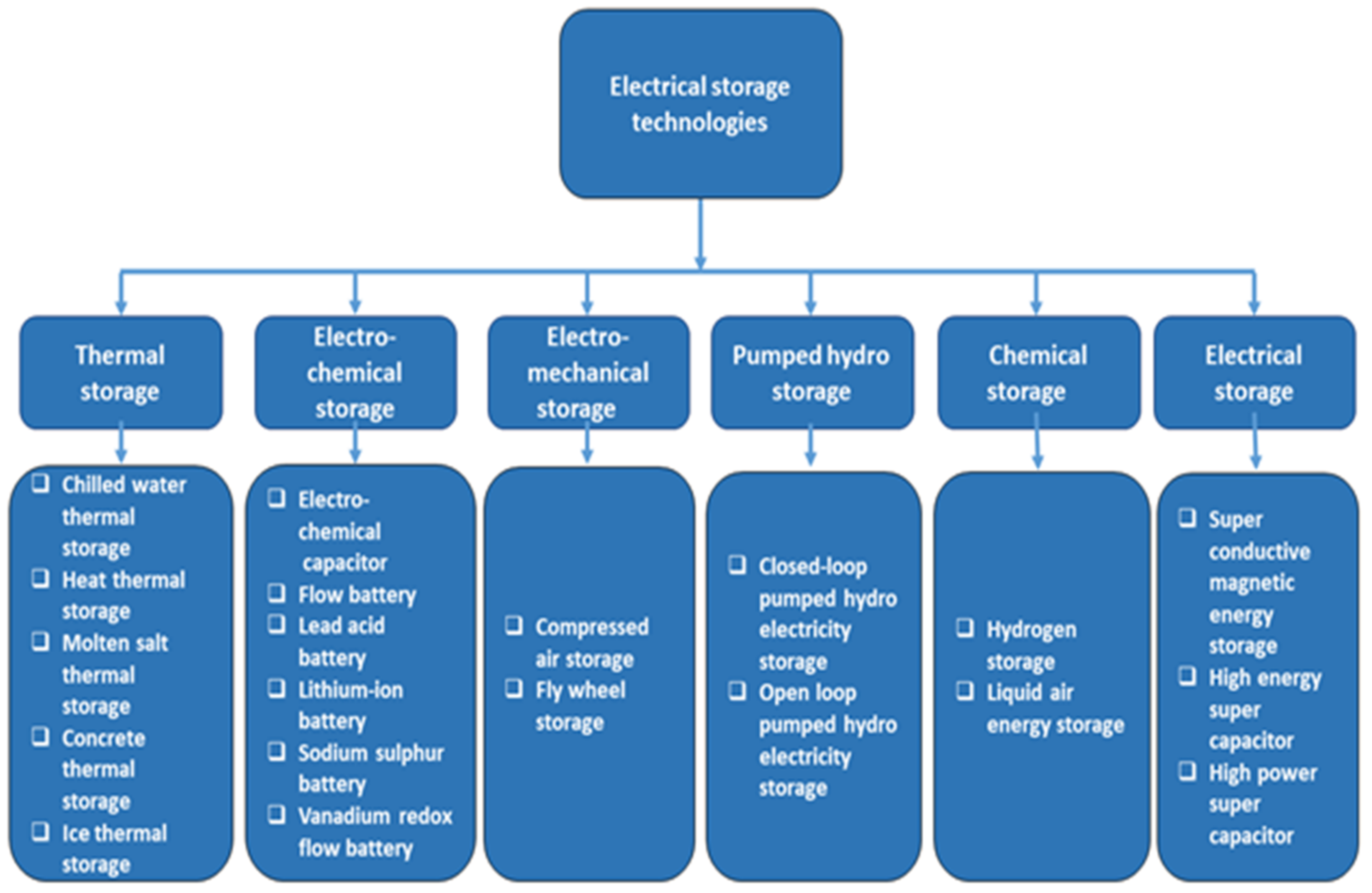
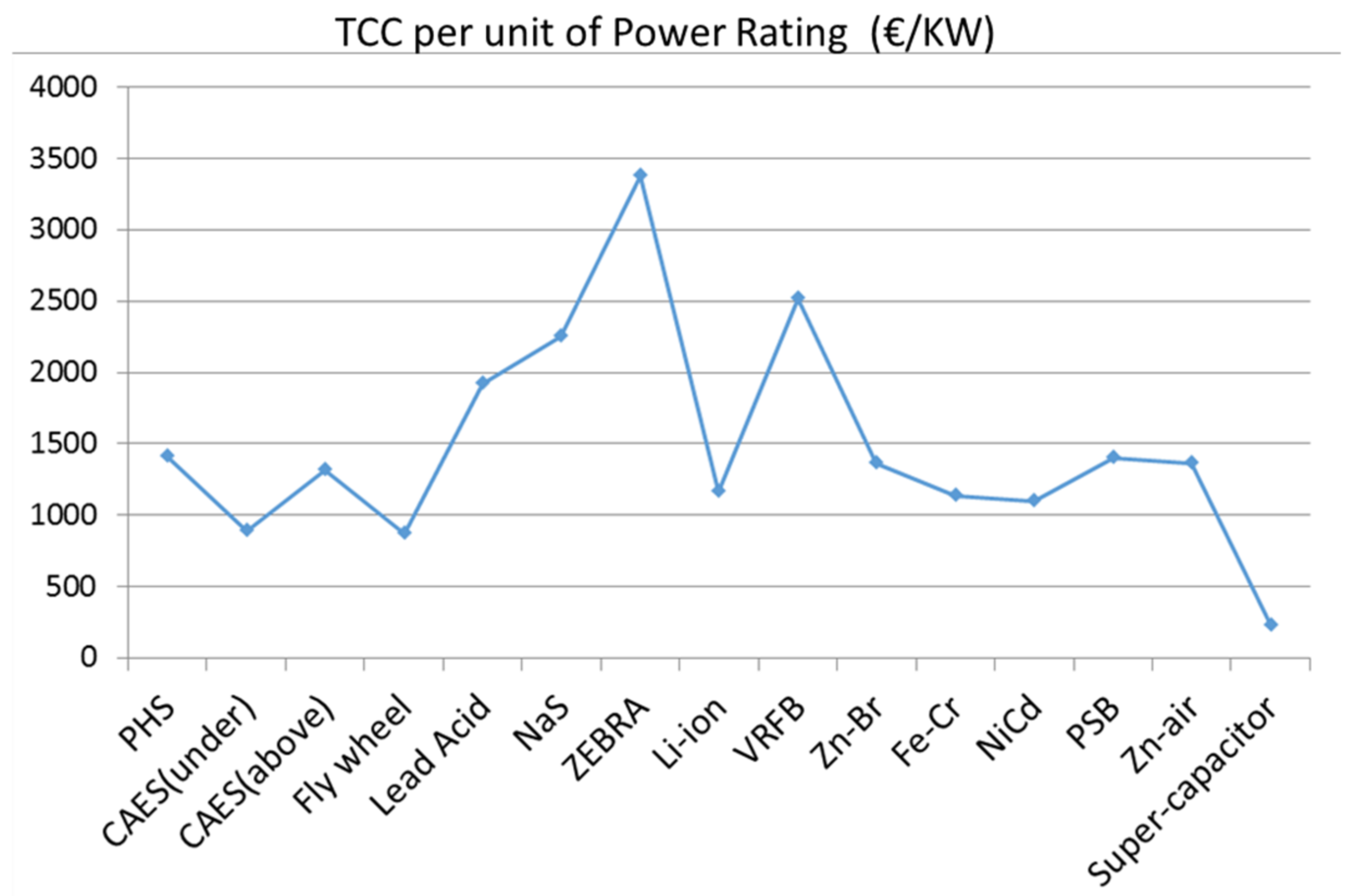
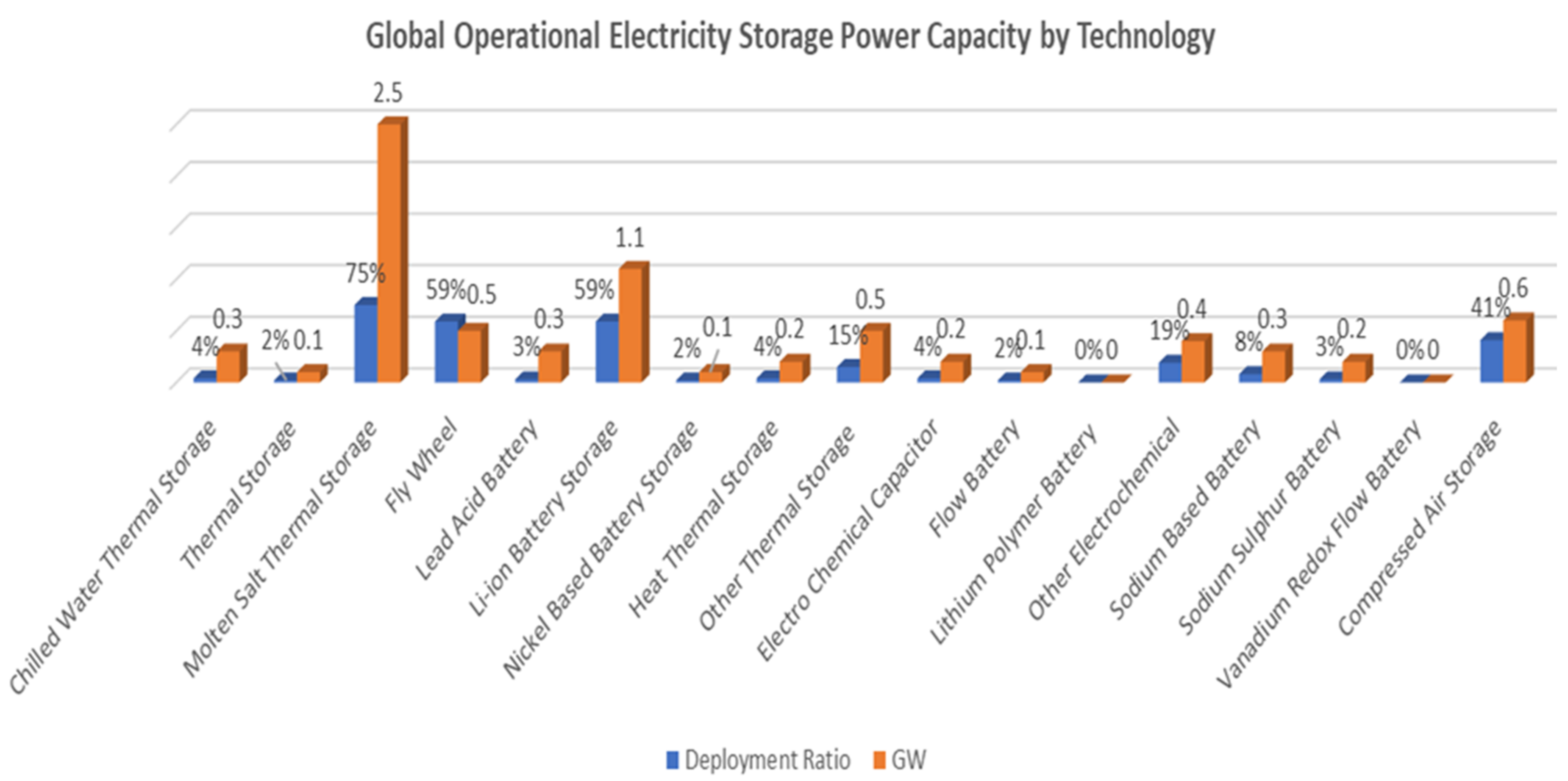
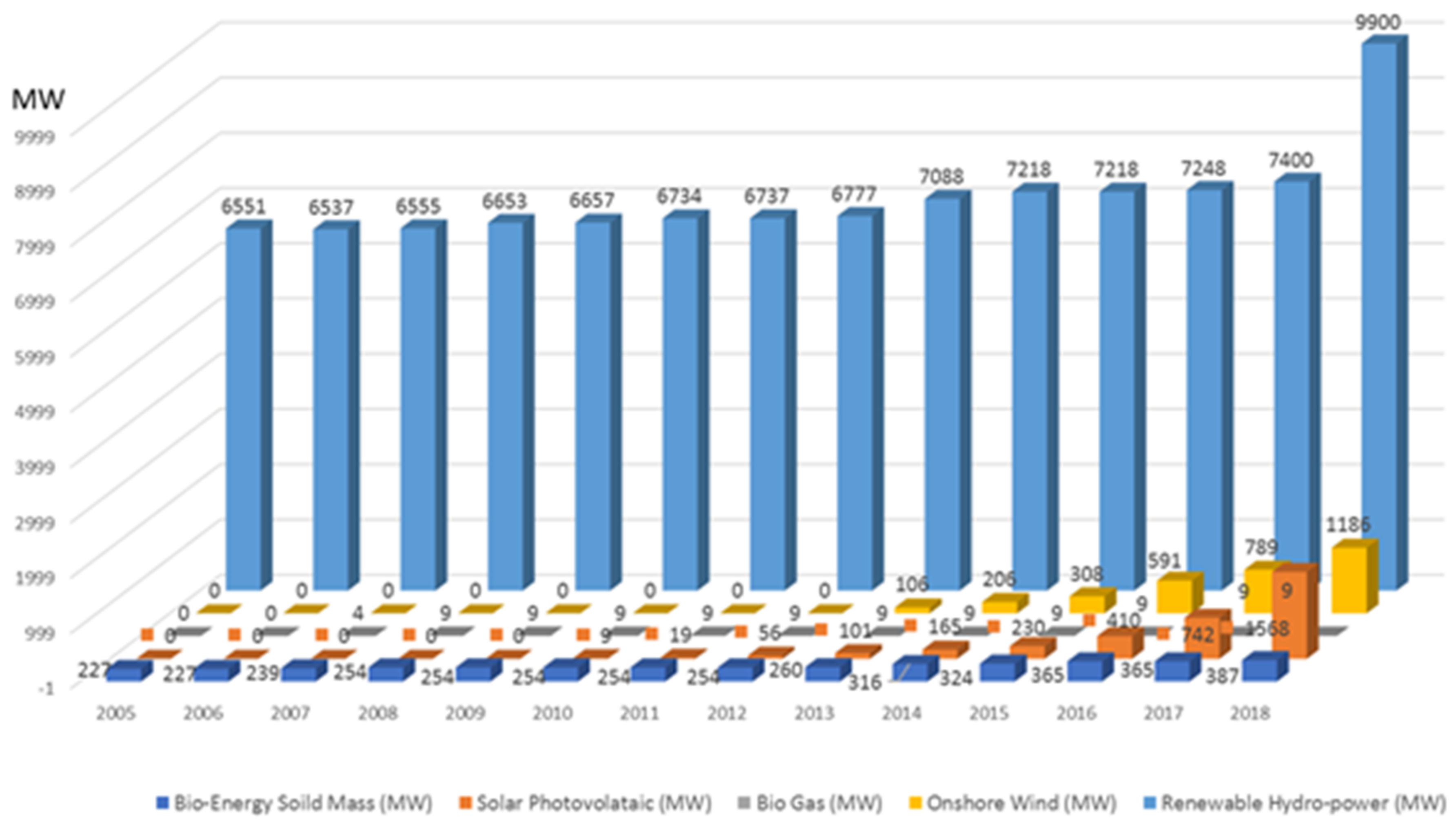
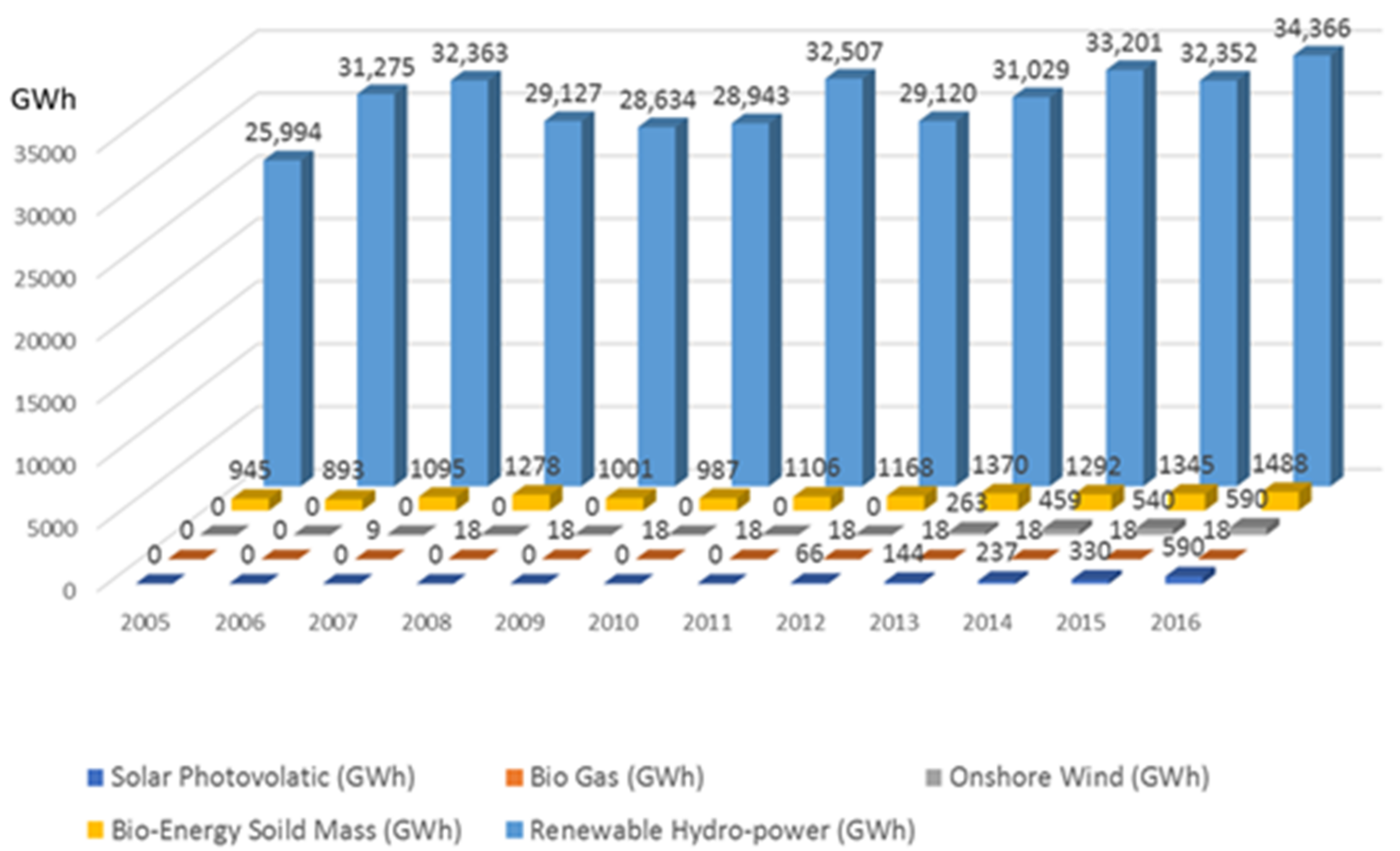
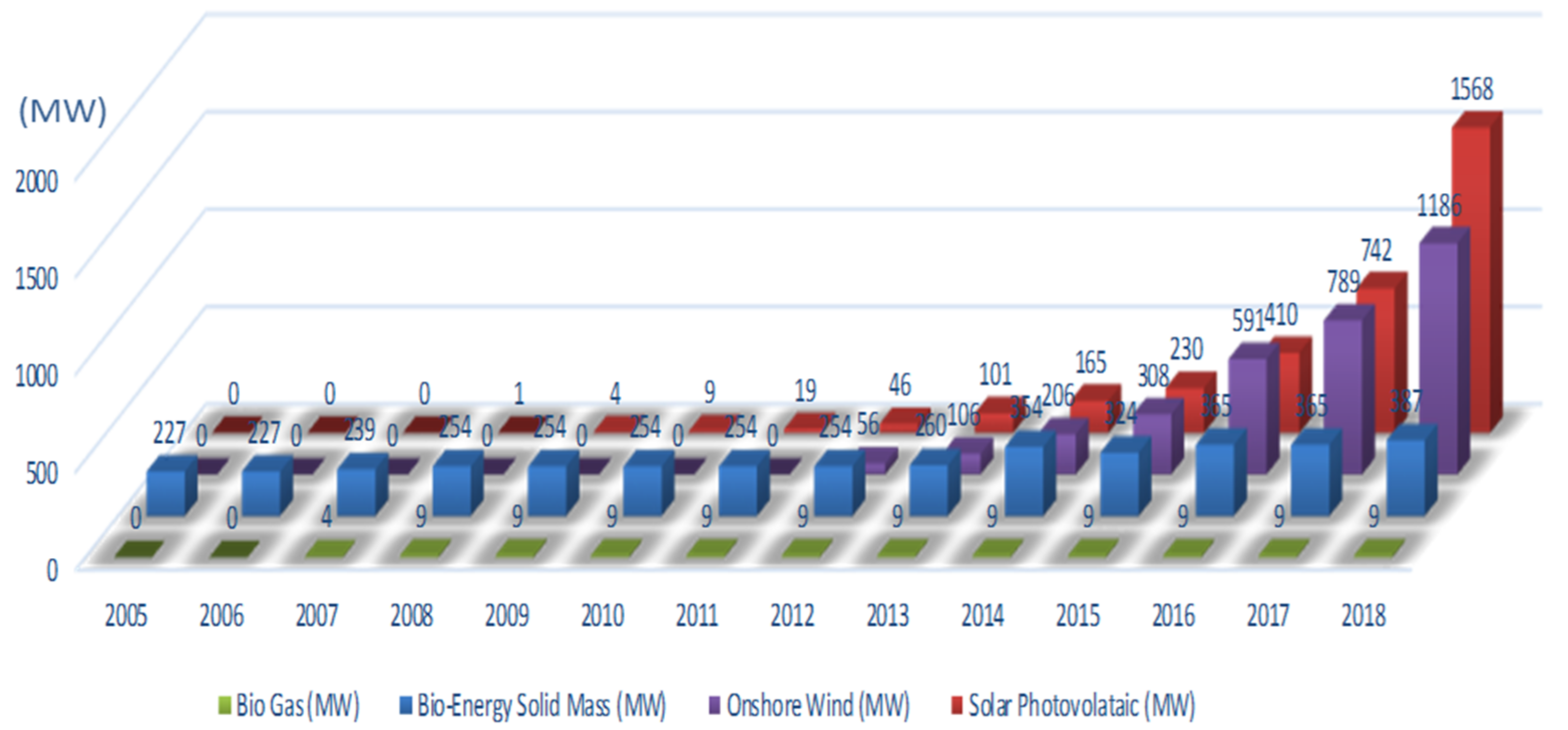
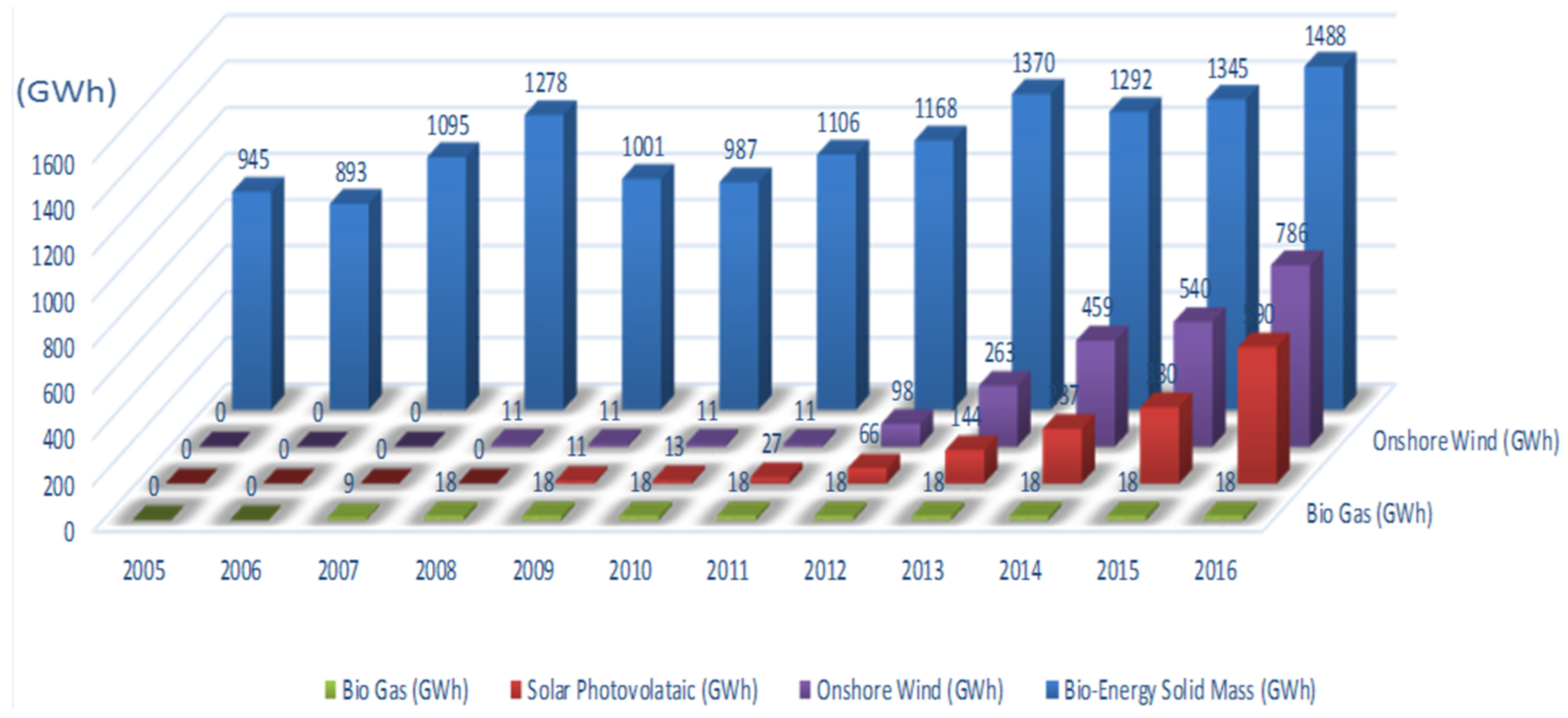
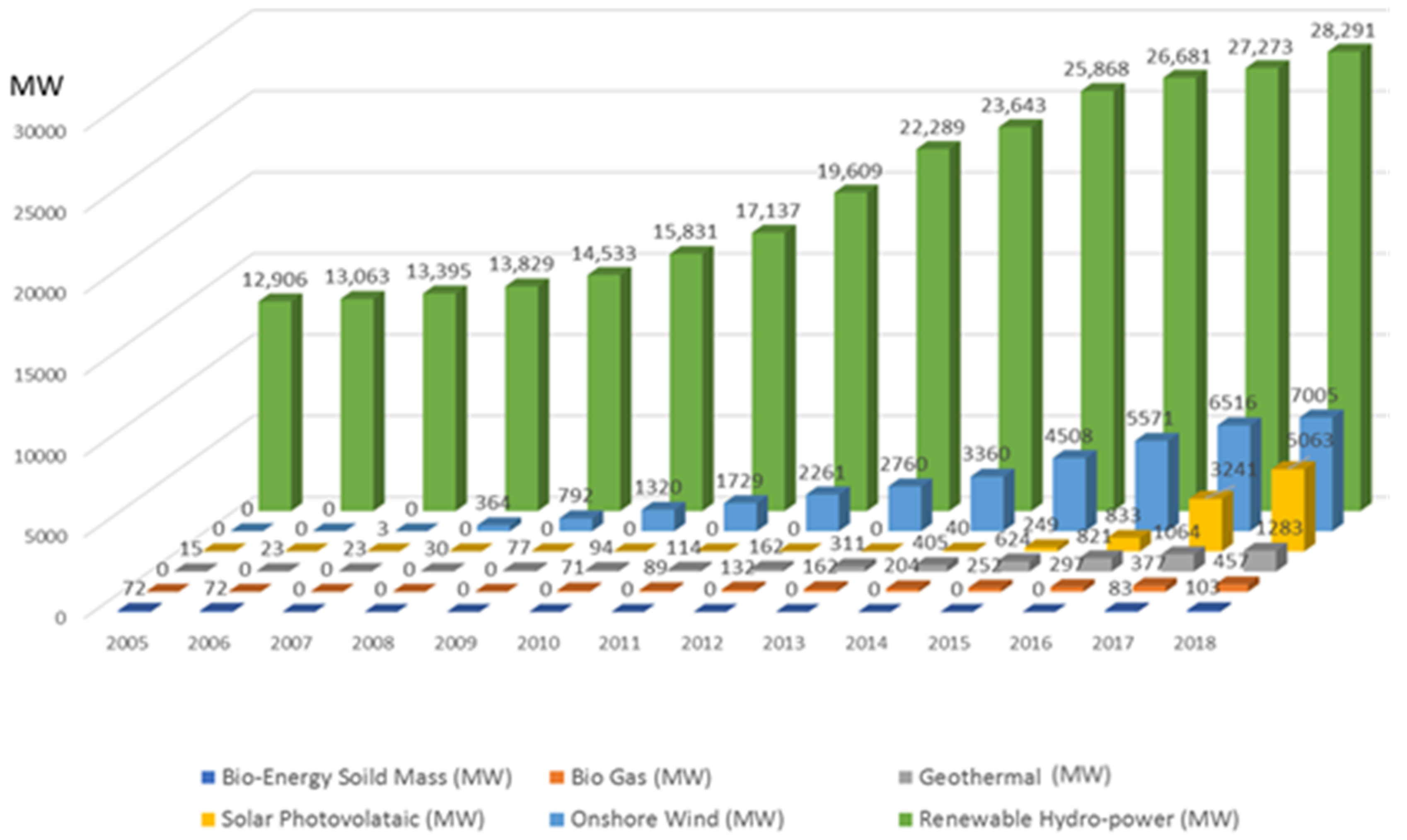
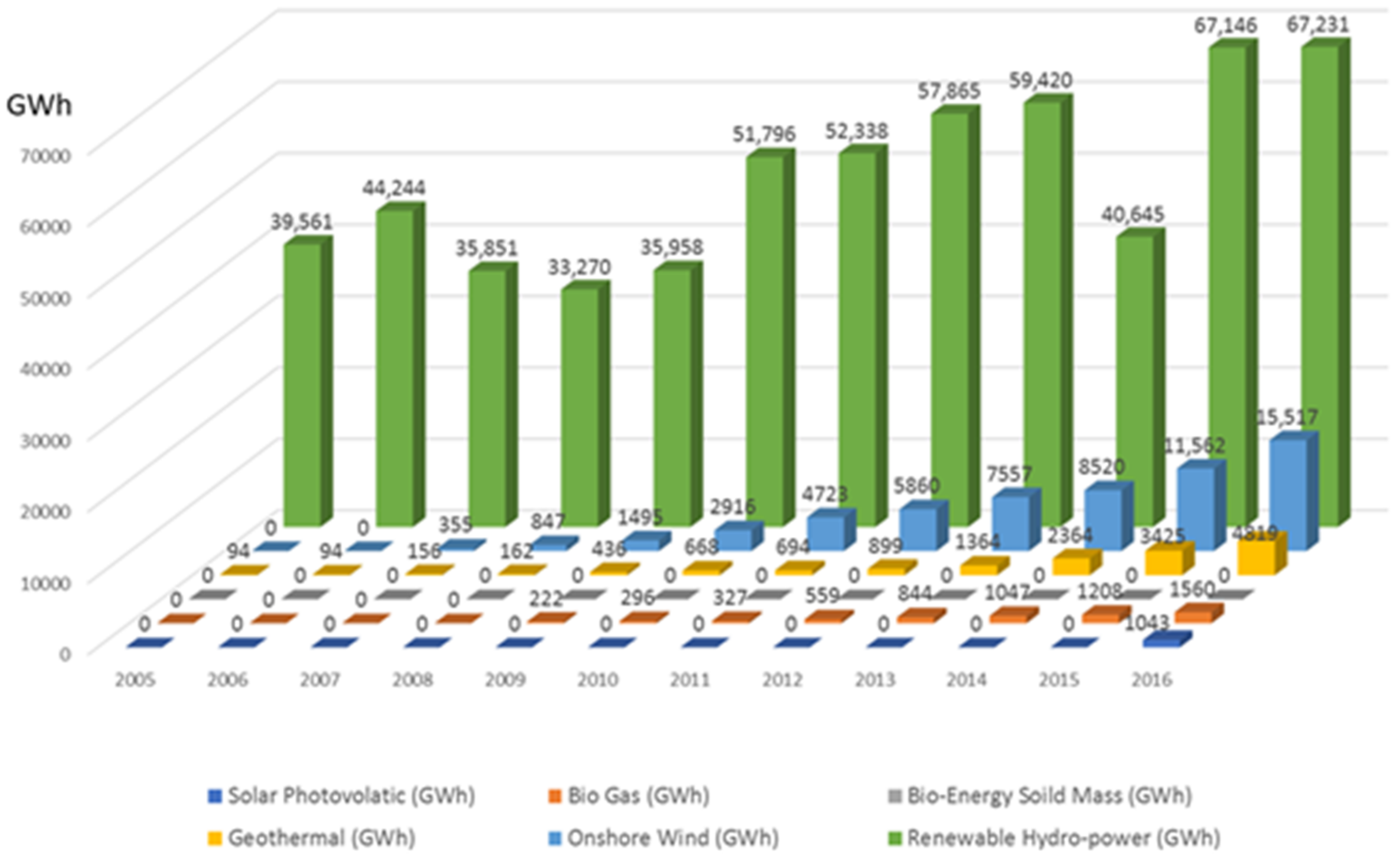
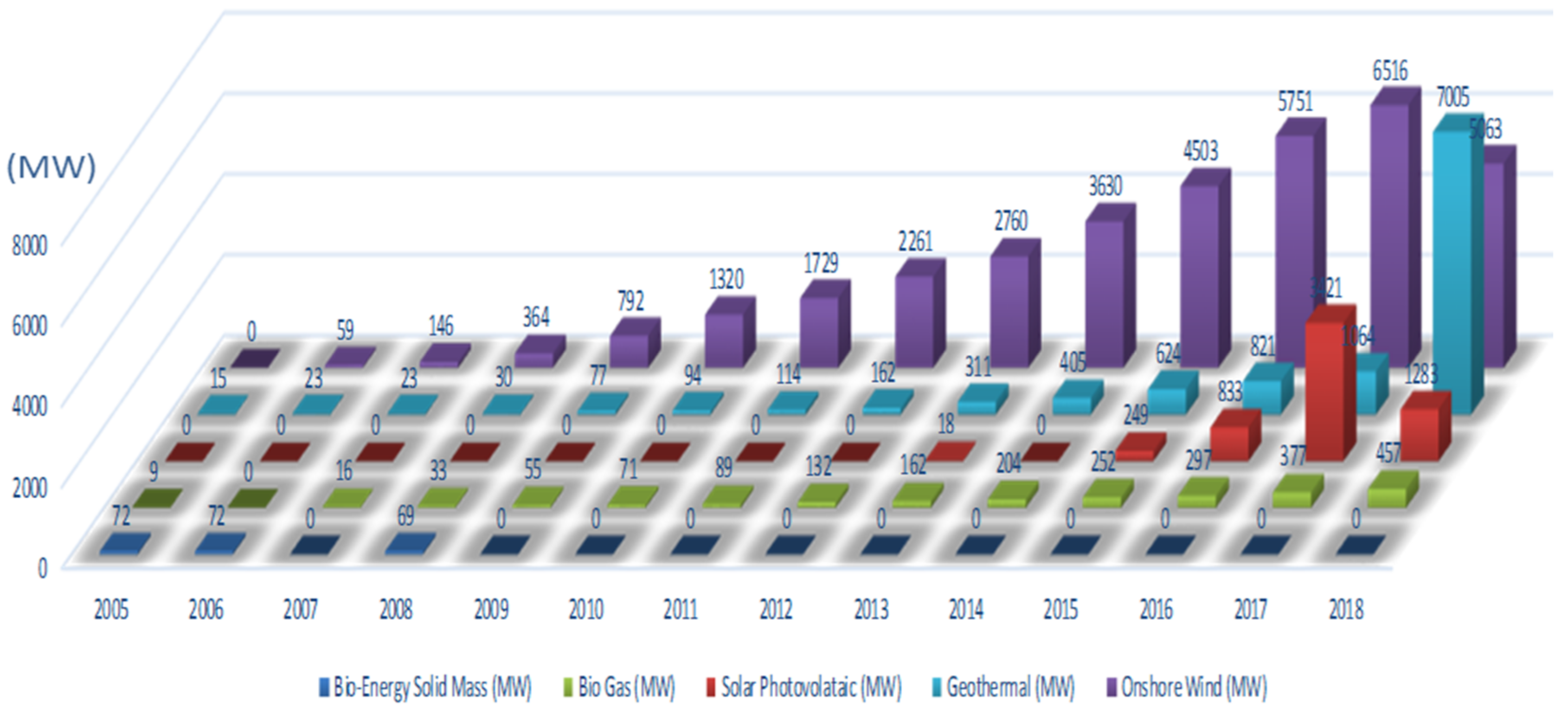
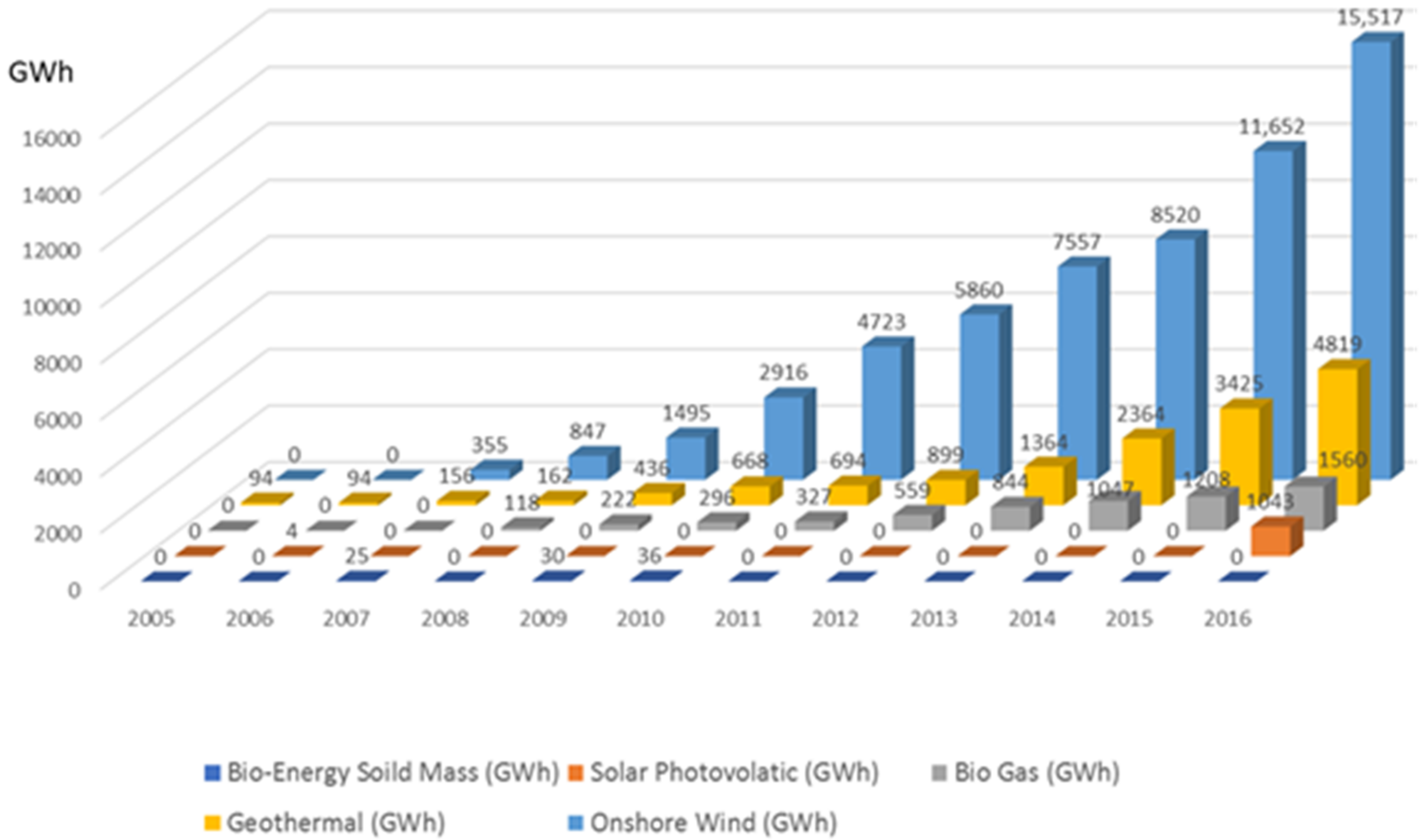
| Storage Systems | ||||||
|---|---|---|---|---|---|---|
| S.No | Technical Indicators | Pumped Hydro Storage (PHS) | Compressed Air Energy Storage (CAES) | Flywheel Energy Storage | Electrochemical Battery Energy Storage (BES) | Hydrogen Based Storage |
| 1 | Commercially proven | Yes | Yes | R & D proven | Initial stage | Ready to implement |
| 2 | Power Capacity | 100–2000 MW | About 3–15MW (with 2–4 h discharge time) | 200 KW flywheel EES and store 5 kWh for a few seconds | Capacity of 10 MW with 4 h as the discharging time | Ready to implement |
| 3 | Operational Cost | 4.6 €/kW-year | No significant reduction of cost | 5.2 €/kW-year | Between 3.2 and 13 €/kW-year | Initial stages |
| 4 | Construction and Installation costs | Average costs 1406 €/kW | Average costs 893 €/kW | Average costs 867 €/kW | Average costs 2512 €/kW (Li-ion batteries) | The capital costs of electrolysis itself varies in different applications. |
| 5 | Efficiency | 0.70–0.82 | 0.70–0.90 | 0.93–0.95 | 0.85–0.95 (Li-ion Batteries) | Net electrolysis efficiency up to 83% |
| S.No | Recommended Policies | Pakistan | Turkey |
|---|---|---|---|
| 1 | Enable the direct investment in renewable energy | ✓ | ✓ |
| 2 | Phasing out subsidies | ✓ | ✓ |
| 3 | Tax exemption from RET | ✓ | ✓ |
| 4 | Introducing carbon tax | N/A | ✓ |
| 5 | Introducing radioactive tax | ✓ | N/A |
| 6 | Research and development in zero emission and RET | ✓ | N/A |
| 7 | Pilot projects initiative | ✓ | N/A |
| 8 | Develop more competition to provide relief to consumers | ✓ | ✓ |
| 9 | Learn from others through positive case studies | ✓ | ✓ |
Publisher’s Note: MDPI stays neutral with regard to jurisdictional claims in published maps and institutional affiliations. |
© 2021 by the authors. Licensee MDPI, Basel, Switzerland. This article is an open access article distributed under the terms and conditions of the Creative Commons Attribution (CC BY) license (http://creativecommons.org/licenses/by/4.0/).
Share and Cite
Uddin, R.; Raza Khan, H.; Arfeen, A.; Shirazi, M.A.; Rashid, A.; Shahbaz Khan, U. Energy Storage for Energy Security and Reliability through Renewable Energy Technologies: A New Paradigm for Energy Policies in Turkey and Pakistan. Sustainability 2021, 13, 2823. https://doi.org/10.3390/su13052823
Uddin R, Raza Khan H, Arfeen A, Shirazi MA, Rashid A, Shahbaz Khan U. Energy Storage for Energy Security and Reliability through Renewable Energy Technologies: A New Paradigm for Energy Policies in Turkey and Pakistan. Sustainability. 2021; 13(5):2823. https://doi.org/10.3390/su13052823
Chicago/Turabian StyleUddin, Riaz, Hashim Raza Khan, Asad Arfeen, Muhammad Ayaz Shirazi, Athar Rashid, and Umar Shahbaz Khan. 2021. "Energy Storage for Energy Security and Reliability through Renewable Energy Technologies: A New Paradigm for Energy Policies in Turkey and Pakistan" Sustainability 13, no. 5: 2823. https://doi.org/10.3390/su13052823
APA StyleUddin, R., Raza Khan, H., Arfeen, A., Shirazi, M. A., Rashid, A., & Shahbaz Khan, U. (2021). Energy Storage for Energy Security and Reliability through Renewable Energy Technologies: A New Paradigm for Energy Policies in Turkey and Pakistan. Sustainability, 13(5), 2823. https://doi.org/10.3390/su13052823










